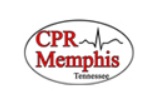Bacillus cereus | Unknown Lab Report, Microbiology
Call Us Now
Get the Best CPR Class in Memphis Today!
UNKNOWN LAB REPORT
Rebecca Lashley
Microbiology
Spring 2013
Call Us Now
Get the Best CPR Class in Memphis Today!
INTRODUCTION
Being able to properly identify a microorganism is quite important for many reasons. It helps determine what illness a person can have and how to cure it. It can help form proper antibiotics and even new antibiotics. Proper identification of certain bacteria is needed for certain food preparation such as certain breads. This study was completed from the knowledge and methods we have obtained throughout the course and laboratory assignments of microorganism identification.
MATERIALS AND METHODS:
Two test tubes of unknown contents labeled 123 and alternate 8 was handed out by the instructor. The basic procedures of microorganism identification where applied to these unknowns from the information we have learned in class. The first step taken was to use an inoculating loop streak and dry heat on a nutrient agar plate to get the bacteria to grow. The plate was placed at room temperature for 48 hours for incubation.
After the incubation period, the Nutrient agar plate was examined and a bacterial growth was observed. To start the isolation process, a Gram test was performed which showed Gram negative Bacillus rods from a single colony. No other bacterial growth was observed. To verify my results of a Gram negative Bacillus rod, the steps were repeated in re-growing the bacteria.
On my second Nutrient agar plate, after the 48 hour incubation period, there was too much overgrowth for an accurate reading. A third Nutrient Agar streak plate was done in an attempt to grow the second bacteria, but when instead of pulling through a single line of bacteria, a line was pulled through all the lines to gather more bacteria. The NA plate was again set at room temperature for 48 hours for incubation.
Upon review of this plate, there was again contamination. Three new NA plates were from the original mixed cultures were done in the same fashion of pulling through all lines. These plates were also set aside at room temperature for 48 hours for proper incubation. After 48 hours, these plates also yielded contamination. The instructor stated the original tube #114 must have been contaminated, so he supplied a new tube of #123. A streak was done on new NA plates and they were set aside at room temperature to incubate.
Close examination of these NA plates shown isolated colonies. A Gram stain was performed which showed a result of Gram negative rods. From the same dot, a new NA plate was produced to verify the unknown 123 would remain Gram negative. After the 48 hour incubation period, another Gram stain was done which verified Gram negative rods. A new Mannitol Salt Agar streak plate was done from unknown 123 to inhibit the growth of Gram negative growth in attempt to grow the Gram positive bacteria.
After the incubation period, nothing grew on the MSA plate. Since the deadline of the assignment was closely approaching, the instructor supplied me with alternate tube 8 which was guaranteed to be either Gram positive Bacillus rods or cocci. For the Gram negative plate, the following tests were applied: indole, Simmons citrate, and Urea. These plates were set to incubate and to be checked again in 48 hours to obtain the identity of the Gram negative bacteria
After the incubation period of the nutrient agar plate, and growth was verified a Gram stain was done. Test tube alternate 8 tested positive for Gram positive Bacillus rods which leads me to either Bacillus cereus or Bacillus subtilis. A methyl red and casein test was done to determine which Gram positive bacteria was and set aside to incubate.
RESULTS:
For the Gram negative rods, the indole test came back positive which left me between Escherichia coli or Proteus vulgaris. The Simmons citrate test came back negative for both E. coli and P. vulgaris. The urea test came back positive which told me unknown 123 was P. vulgaris.
The test results for the Gram positive Bacillus rods came back positive for methyl red. The casein test on the milk agar also came back positive which lead to the identity of alternate 8 being B. cereus.
*SEE TABLES AT END OF REPORT
DISCUSSIONS/CONCLUSIONS:
For the Gram negative bacteria, the sheet of the possible unknowns had five different options. The process started with an indole test which narrowed the options to two. Then a Simmons citrate test was performed as the instructor said it is more reliable and accurate. The Simmons citrate confirmed the indole results. So with only two bacteria left, a test was needed to differentiate the two. The Urea test was implemented to name the unknown. This test showed positive which gave me P. vulgaris.Table 1 shows the tests, purpose of tests, reagents, observations, and results used to come to my conclusion. Flowchart 1 also chronologically maps how the conclusion was reached. After showing the results to the instructor, he confirmed the conclusion was correct. Some problematic issues were experienced in growing the bacteria on the nutrient agar plate. After many attempts to grow bacteria and only receiving contamination, the instructor came to the conclusion that the test tube was contaminated.
The Gram negative Bacillus rods were simpler to identify as they only had two options. The selection process was started with a methyl red test which led to the conclusion of B. cereus by producing a positive test result. To verify this result, a casein test was done which also positively identified B. cereus. The instructor verified the results via email as being correct. The problematic issues from 123 was that the Gram positive would not grow and with the due date fastly approaching, the instructor supplied tube alternate 8. Alternate 8 quickly produced B. cereus Table 2 shows the tests, purpose of tests, reagents, observations, and results of said tests that led me to my conclusion. Flowchart 2 also chronologically maps how the conclusion was reached.
B. cereus is a spore-forming Gram positive Bacillus rod capable of producing food poisoning. B. cereus has been found in cereals, vegetables, pasteurized and powdered milk. Food poisoning from B. cereus is from improperly refrigeration and reheating of foods.
Two different clinical syndromes appear to be associated with B. cereus food poisoning, which correspond to two different toxins elaborated by the bacteria. A diarrheal syndrome similar to Clostridium perfringens food poisoning with an average incubation period of 10-12 hours has been associated with a heat-labile toxin elaborated by B. cereus. An emetic syndrome similar to staphylococcal food poisoning, with an average incubation period of 1-6 hours, has been associated with a heat-stable toxin from B. cereus (1).
References
Center for Disease Control. CDC.gov. 29 April 2013 <http://www.cdc.gov/mmwr/preview/mmwrhtml/00000754.htm>.
Virginia McDonald, Mary Thoele, Bill Salsgiver, Susie Gero. “Lab Manual for General Microbiology.” April 2011.
Center for Disease Control. CDC.gov. 29 April 2013 <http://www.cdc.gov/mmwr/preview/mmwrhtml/00000754.htm>.(1)
TEST |
PURPOSE |
REAGENTS |
OBSERVATIONS |
RESULTS |
||
| Gram Stain | To classify if the bacteria is Gram positive or Gram Negative | Crystal violet, Iodine Solution, alcohol decolorizer, Safranin | Red rods | Gram negative bacillus rods | ||
| Indole (SIM) | To establish if the bacteria can produce indole from tryptophan to classify it as a Enterobacteriaceae | Kovac’s added to 1 ml of tryptone broth | Red layer on top, a hazy growth throughout the tube, and black precipitate in butt of tube | Positive indole, sulfur, and motility | ||
| Simmons Citrate | To see if the bacteria can use citrate as a sole carbon source and ammonia ions as the sole nitrogen source |
Ammonium dihydrogen phosphate, dipotassium phosphate, sodium chloride, sodium citrate, bromthymol blue (none) |
Test tube was green |
Negative result
|
||
| Urea | To see if the bacteria could hydrolyze urea by using urease |
Peptone, Dextrose, Sodium Chloride, Potassium Phosphate, Urea, Phenol Red (none) |
Test tube was bright pink in color | Positive urea test |
TEST |
PURPOSE |
REAGENTS |
OBSERVATIONS |
RESULTS |
||
| Gram Stain | To classify if the bacteria is Gram positive or Gram Negative | Crystal violet, Iodine Solution, Alcohol, Safranine | Purple rods | Gram positive bacillus rods | ||
| Methyl Red | To see if the bacteria would produce glucose |
Methyl Red, Ethyl Alcohol, a-Naphthol, Potassium Hydroxide, Creatine MR reagent |
Test tube turned red | Positive methyl red result positive | ||
| Casein | To see if the bacteria could hydrolyze casein | Skim Milk Powder | A clear zone around the growth | Positive for casein |









